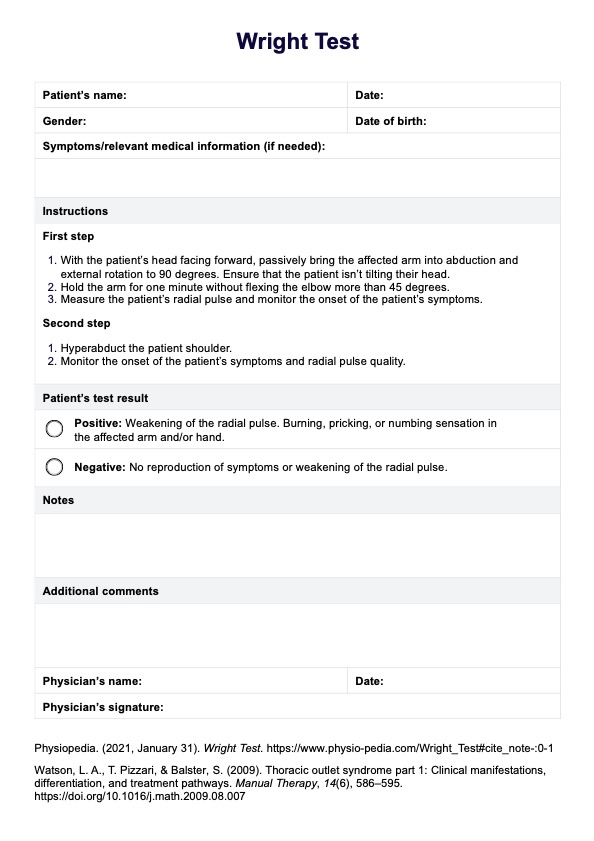You use the Write test by following the instructions provided and observing the radial pulse of the client throughout. On the other hand, the “How does this Wright Test work” section explains how to download and use the Wright Test template step-by-step.

Wright Test
Use the Wright Test to check for thoracic outlet syndrome in your patients. Download a free template and check out our guide on using it.
Use Template
Wright Test Template
Commonly asked questions
You can administer the test quickly and immediately get results. For a full list of benefits of using the test and the template, please refer to the “Benefits of these free Wright test templates” section above.
It is one of the provocative tests used for diagnosing thoracic outlet syndrome.
EHR and practice management software
Get started for free
*No credit card required
Free
$0/usd
Unlimited clients
Telehealth
1GB of storage
Client portal text
Automated billing and online payments











